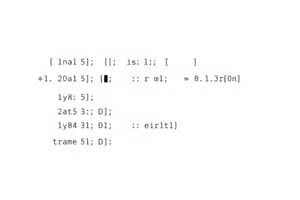Podcast
Questions and Answers
Which of the following data types is considered immutable?
Which of the following data types is considered immutable?
- Tuple (correct)
- List
- Dictionary
- Set
The expression print() is an example of a statement.
The expression print() is an example of a statement.
True (A)
What is the purpose of using == in Python?
What is the purpose of using == in Python?
To compare two values for equality.
In Python, a __________ cannot be changed after it has been created.
In Python, a __________ cannot be changed after it has been created.
Match the following control structures with their types:
Match the following control structures with their types:
Study Notes
### Data Types
- int - Whole numbers, like 5, -10
- float - Numbers with decimal points, like 3.14, -2.5
- str - Strings, sequences of characters, like "Hello", "Python"
- list - Ordered collections of items, modifiable, like [1, 2, 3], ['a', 'b', 'c']
- tuple - Ordered collections of items, immutable, like (1, 2, 3), ('a', 'b', 'c')
- dict - Unordered collections of key-value pairs, like {'name': 'Alice', 'age': 30}
- set - Unordered collections of unique items, like {1, 2, 3}, {'a', 'b', 'c'}
Variables
- Namespace - A region of memory where variables reside
- Variable Naming Rules - Must start with a letter or underscore, can contain letters, numbers, and underscores
- Variable Naming Conventions - Use lowercase letters, separate words with underscores
- Assignment with = - Assigns a value to a variable, like
my_variable = 10 - == vs. is -
==checks for equality in value,ischecks for identity (same memory location)
Control Structures
- Boolean Expressions - Evaluate to True or False
- Comparisons:
==(equals),!=(not equals),>(greater than),<(less than),>=(greater than or equals),<=(less than or equals)
- Comparisons:
- print - Displays output to the console
- input - Retrieves input from the user
Studying That Suits You
Use AI to generate personalized quizzes and flashcards to suit your learning preferences.
Description
This quiz covers the essential data types in Python, including integers, floats, strings, lists, tuples, dictionaries, and sets. Additionally, it explores the rules and conventions for naming variables, along with assignment operators and identity checking. Test your knowledge on these fundamental programming concepts!




